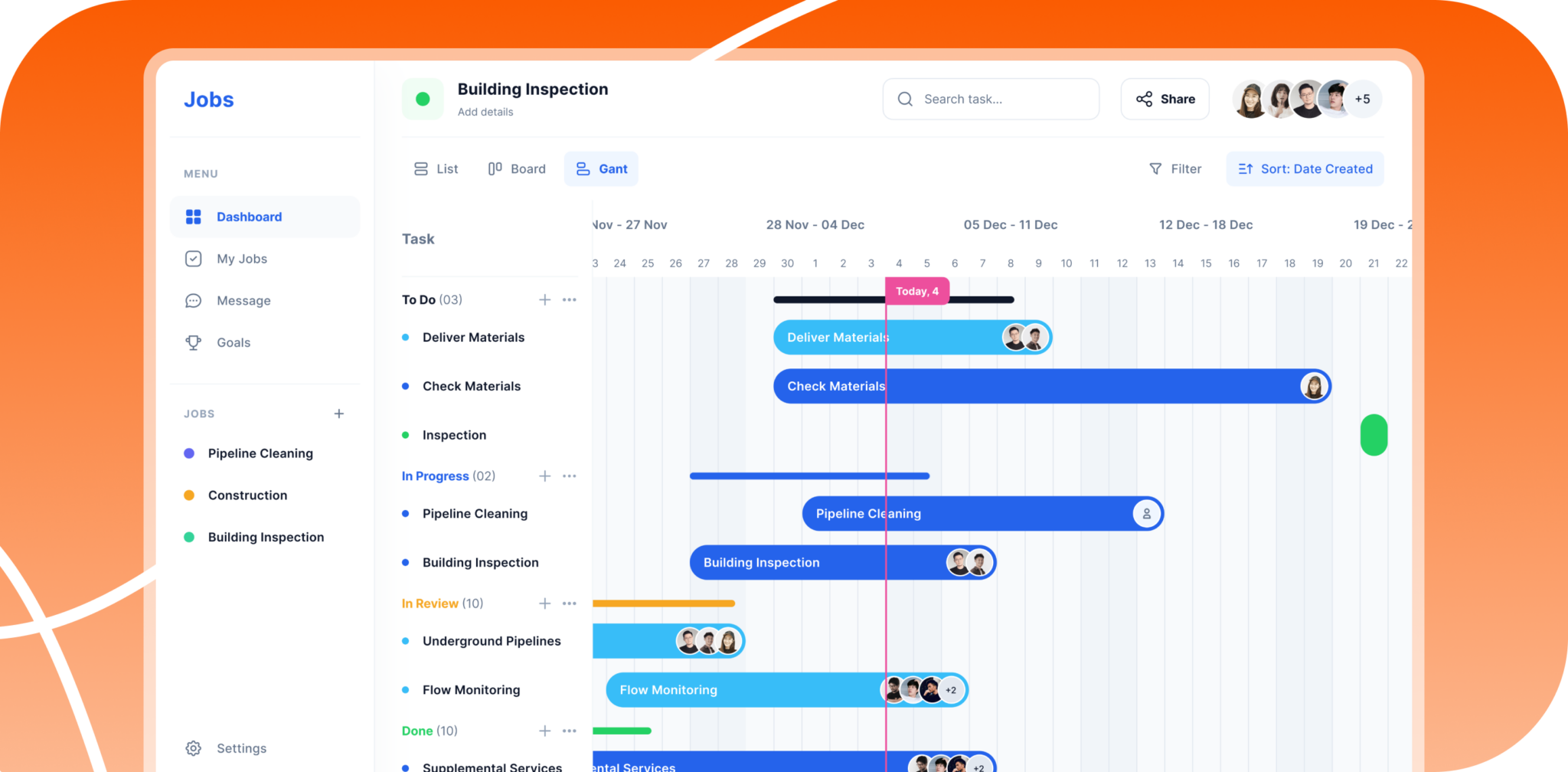Downstream SkyNet – Cloud-Based Job Management System
Optimizing job scheduling and resource management for a repair company

Project background
Overview
Downstream SkyNet is a job scheduling and resource management system used by a repair company in San Diego. The original application was developed by non-technical individuals, leading to performance issues, scalability limitations, and suboptimal development practices. The client needed a full system rewrite to transition from the legacy system to a cloud-based solution that follows best development practices while improving efficiency and usability.
The backend had already been developed when we joined the project, and our primary focus was on refining and finalizing the UI and application logic to ensure smooth integration with the backend. The objective was to deliver a fast, scalable, and maintainable system that meets the client’s operational needs.
Project Goals
- Rewrite the existing job scheduling and management application as a cloud-based solution for better scalability and performance.
- Implement a robust UI framework and integrate it with the backend logic.
- Optimize the management of jobs, clients, and resources, ensuring efficient tracking and scheduling.
- Follow best development practices to improve system maintainability and stability.
- Webapp
- 3team members
- 500+hours spent
- Manufacturingdomain
Challenges
- Refactoring and optimizing a previously unstructured codebase while maintaining feature parity.
- Ensuring seamless integration between the newly developed UI and the existing backend.
- Improving system performance to handle job scheduling efficiently and reduce response times.
- Structuring a scalable architecture that allows for future feature expansions.

Our approach
Solution
We started by analyzing the existing system to identify core inefficiencies and performance bottlenecks. The project management was structured in Impelx, where we tracked tasks, issues, requirements, and test cases. The UI framework was built from scratch, following modern design principles for improved user experience and responsiveness.
Our development approach emphasized best coding practices, including modular development, reusable components, and optimized database queries. Close collaboration with the client allowed us to prioritize key features, ensuring that the final product met their exact needs.
The new version of Downstream SkyNet was implemented as a cloud-based application, improving scalability and performance. The Angular-based UI seamlessly interacts with the .NET Core backend, providing a structured and optimized workflow.
The new system ensures that job scheduling and resource allocation are intuitive and efficient, reducing delays and errors in the process. The database was structured in MySQL, enabling faster queries and better data integrity.
Team
The project was executed by a three-member team, consisting of a developer, a tech lead, and a project manager. The developer focused on UI implementation and smooth integration with the backend. The tech lead provided architectural guidance and oversaw the development of scalable and maintainable solutions. The project manager facilitated communication with the client, ensuring requirements were met and milestones were delivered on time.
Results
The system has been successfully transformed from a legacy, inefficient application into a high-performing cloud-based solution. The transition has significantly improved system scalability, maintainability, and overall user experience. Job scheduling and resource management have become more streamlined, reducing delays and improving workflow efficiency. The integration between the new UI and backend has been fully optimized, ensuring fast response times and seamless data processing. The client now has a modern, reliable, and scalable job management system that supports their growing business needs.
Tools and tech stack
More Projects

- retail
- dotnet
- staffaugmentation

- saas
- python
- webapp



